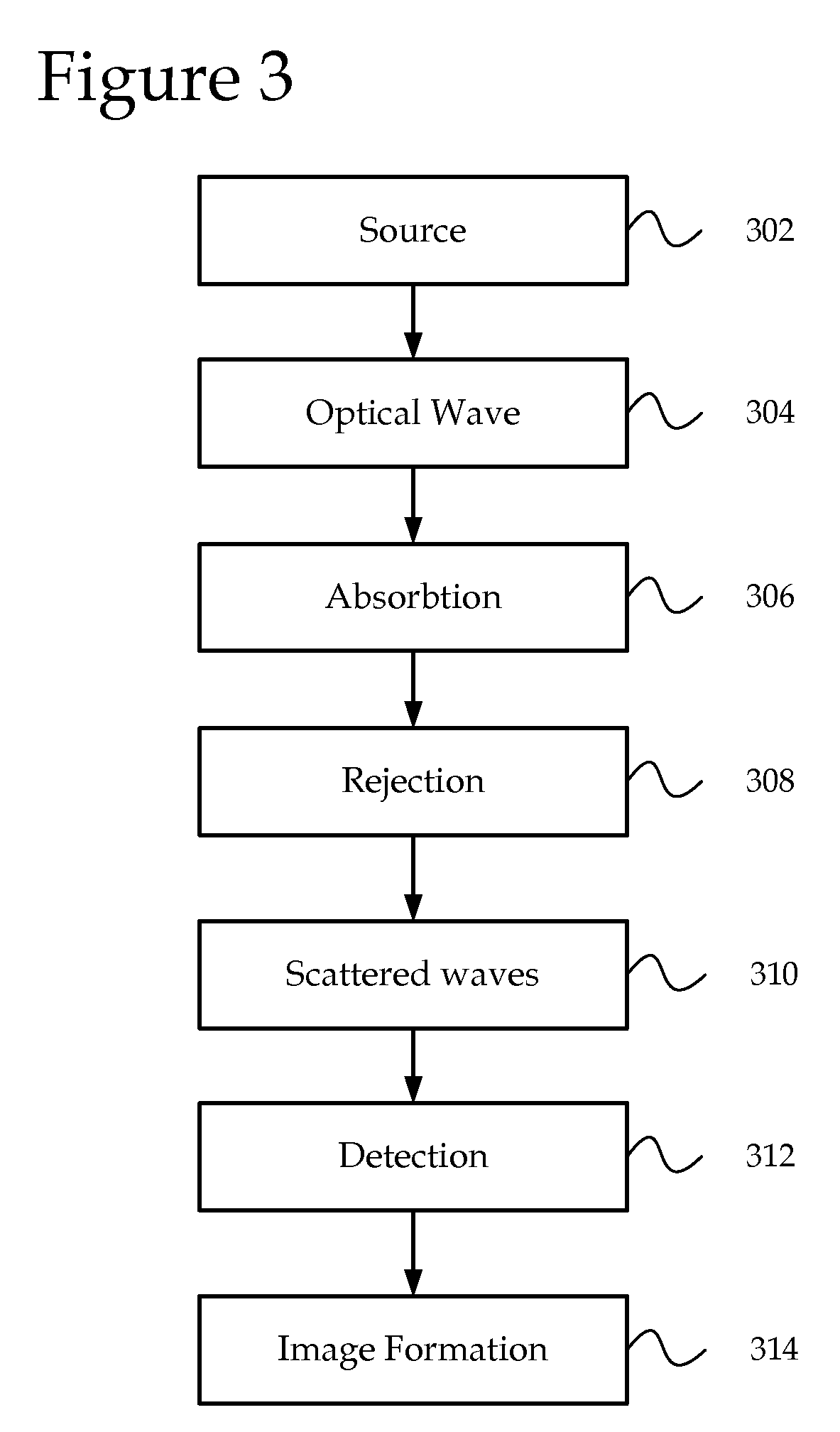Reverse photoacoustic standoff spectroscopy
a technology of photoacoustic standoff and spectroscopy, which is applied in the direction of spectrometry/spectrophotometry/monochromators, optical radiation measurement, instruments, etc., can solve the problems of merely representation and may not be drawn to scal
- Summary
- Abstract
- Description
- Claims
- Application Information
AI Technical Summary
Benefits of technology
Problems solved by technology
Method used
Image
Examples
Embodiment Construction
[0011]By way of introduction, a system and method for generating a reversed photoacoustic spectrum at a greater distance are described. A source may emit a beam to a target and a detector measures signals generated as a result of the beam partially or fully returning to a detector positioned near said source. Absorption of pulsed light by the sample may result in the generation of sound. Absorption of light may also result in decreased reflection or scattering of the light by the sample. By emitting a chopped / pulsed light beam to the target, it may be possible to determine the target's optical absorbance by monitoring the intensity of light collected at a vibratory detector at different wavelengths. As the wavelength of light is changed, the target may absorb or reject each optical frequency. Rejection may increase the intensity at the sensing element and absorption may decrease the intensity. Accordingly, an identifying spectrum of the target may be made with the intensity variatio...
PUM
 Login to View More
Login to View More Abstract
Description
Claims
Application Information
 Login to View More
Login to View More - R&D
- Intellectual Property
- Life Sciences
- Materials
- Tech Scout
- Unparalleled Data Quality
- Higher Quality Content
- 60% Fewer Hallucinations
Browse by: Latest US Patents, China's latest patents, Technical Efficacy Thesaurus, Application Domain, Technology Topic, Popular Technical Reports.
© 2025 PatSnap. All rights reserved.Legal|Privacy policy|Modern Slavery Act Transparency Statement|Sitemap|About US| Contact US: help@patsnap.com



